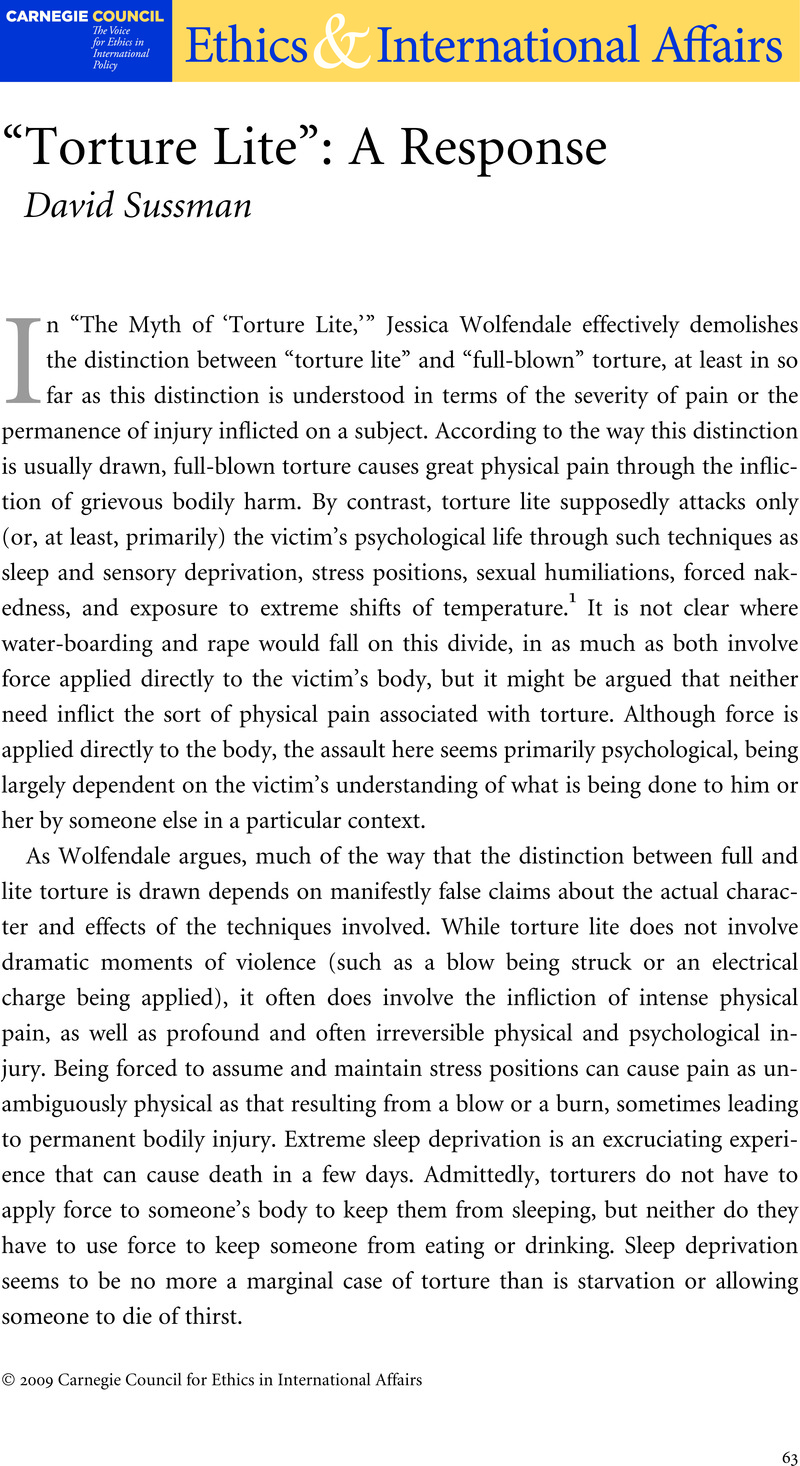Article contents
“Torture Lite”: A Response
Published online by Cambridge University Press: 25 March 2011
Abstract

- Type
- Features
- Information
- Copyright
- Copyright © Carnegie Council for Ethics in International Affairs 2009
References
NOTES
1 Wolfendale also includes mock execution among the forms of torture lite, although I believe it is usually taken to be an unambiguous instance of full-blown torture.
2 Although we do seem to mark such a distinction in our intuitions about punishment. With the possible exception of the death penalty, we seem to consider corporal and mutilative punishment beyond the pale while allowing people to be imprisoned for decades, even though a reasonable person might well choose the former over the latter. It is not clear how we might redeem this intuition if physical assaults are not as such more morally objectionable than psychological ones.
3 I have discussed this consideration at greater length in “What's Wrong with Torture?” Philosophy & Public Affairs 33, no. 1 (2005), pp. 1–34.
4 Artistotle, Nicomachean Ethics 1102a1-5.
- 2
- Cited by


